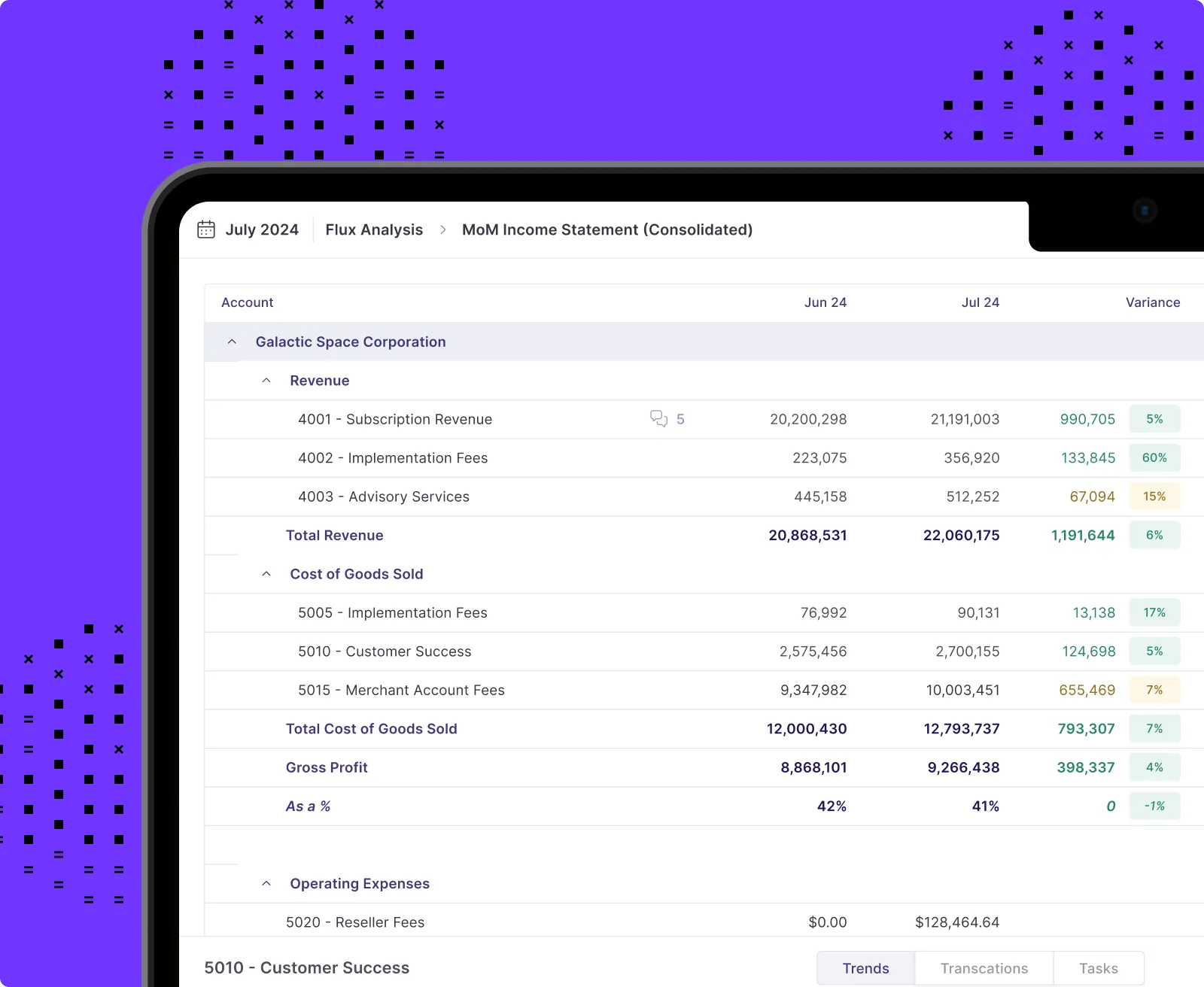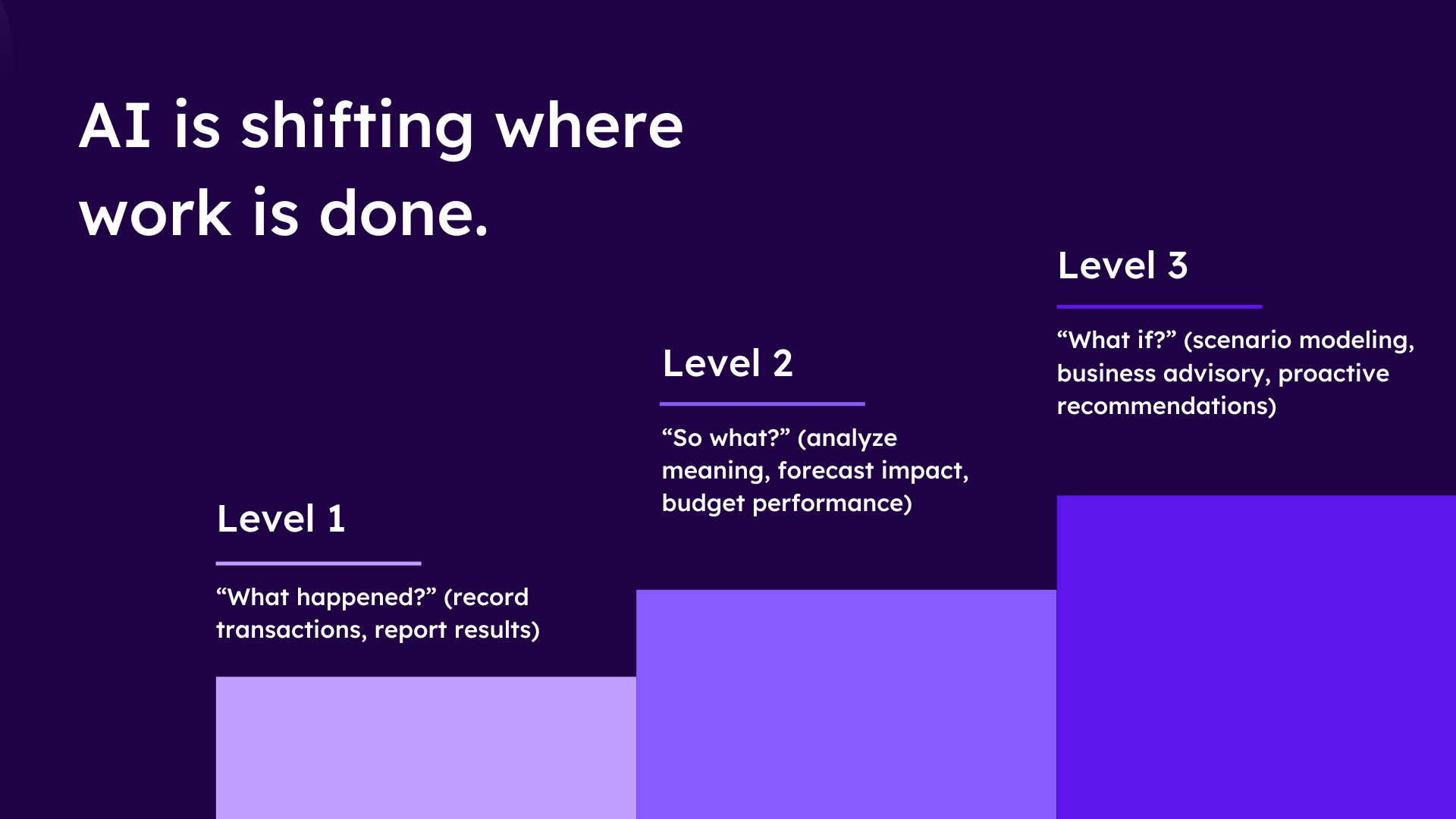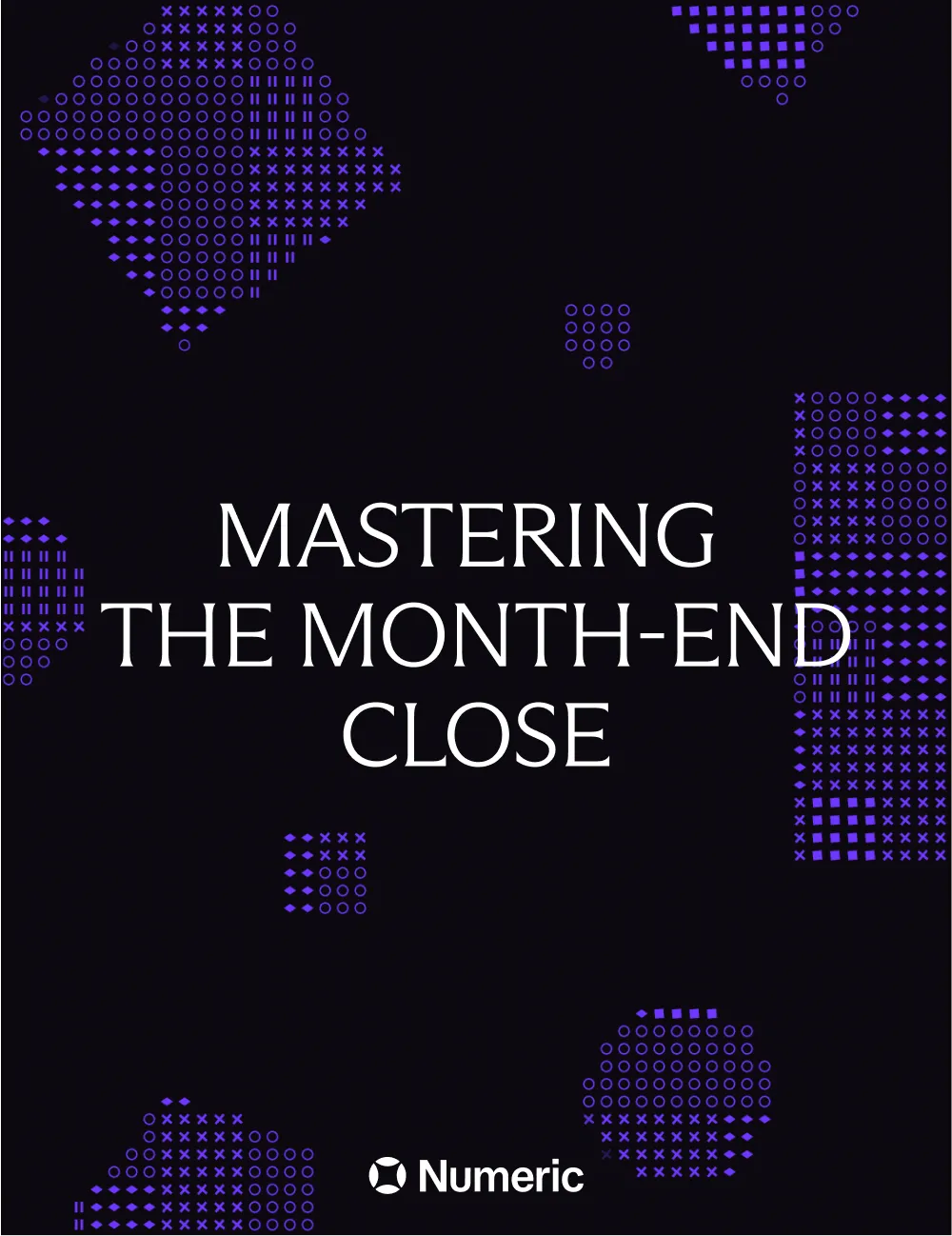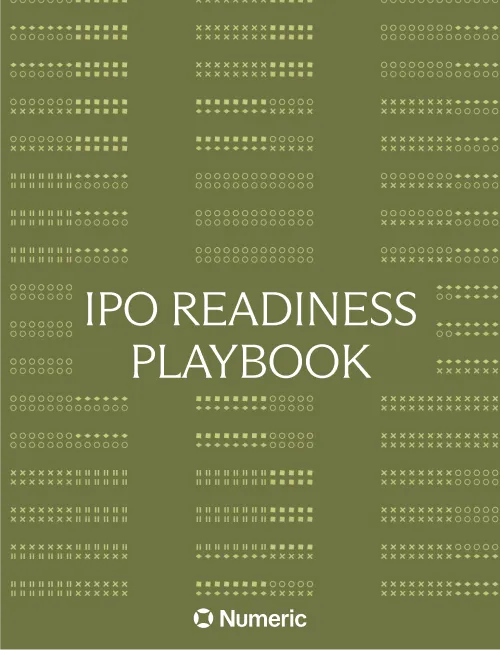Think Global, Account Local: Scaling Multi-entity Finance Teams
.png)
In tech, growth has been and continues to be priority #1. If you’re not growing your customer base, revenue, and share of the market, it’s only a matter of time before someone more ambitious comes along and eats your lunch.
How’s this story for growth? A tech company already earning $80m ARR in 2018 has since achieved:
- 5x revenue
- 3x headcount
- 7 acquisitions
- Market share in 14 countries
These are great numbers for a startup. For an established B2B company, they’re brilliant.
The company in question is Optimizely — a leading digital experience company whose mission is to make marketers’ lives easier. And Sr. Director of Accounting Ben Whitmarsh-Knight has had a front-row seat to the company's evolution, taking away a multitude of lessons along the way.
Ben recently joined Numeric’s Tierney Pretzer to discuss how finance teams should manage growth, M&A, and international expansion. With 23 entities across 19 time zones, Ben has made it a priority to keep his team’s workload manageable while keeping up with the company’s growth. Here’s how he did it.

Standardization: your best defense against complexity
Complexity is the enemy of scale.
– Ben Whitmarsh Knight, Sr. Director of Accounting @ Optimizely
As a company scales, operations inevitably become more complex and as a result, risks abound. You're likely to begin seeing duplicate work, routine inefficiencies, and a great deal of miscommunication across your team.
Ben believes the answer to these changes lies in standardization: establishing one system, one set of policies, and one way of completing your close process.
At a foundational level, having “one system” looks like maintaining a unified data warehouse or data lake that your team can look to as their single source of truth. But system standardization can also take the form of shared tools like templates, documentation, and shared checklists on Numeric.
While these tools take time to set up and maintain, Ben thinks the efficiency payoffs are more than worth it.
Take templates, for example: when preparers and reviewers know exactly what to expect every single time they receive a report, the time required to process these reports drops significantly. It’s like muscle memory for your accounting team; the first report is slow, the second one is a little faster, and the hundredth is near-automatic.
Ben also believes that standardizing processes and systems makes it so that A.I. is both easier to implement and more useful for your team:
M&A playbook and the two close cycle rule
Optimizely has averaged one acquisition a year for the past seven years. In response to this demanding M&A pace, Ben developed and refined a repeatable M&A integration playbook. Even with the right playbook, however, Ben warns:
There’s no such thing as a painless integration. The only question is how long the pain will last.
Finance teams going through an M&A integration of any size will essentially see their work doubled. Double the closes, double the reports, double the questions that need answering -- this will persist until a full integration is complete. So, unless you’re planning to double your headcount, the highest priority should be to work through the pain and get the integration done.
Regarding acquisitions, Ben keeps one rule of thumb: complete the integration within two close cycles.
Here are the steps he recommends to make this happen:
.png)
Step 1: Set expectations
To make sure all stakeholders are aligned, Ben communicates one key message and one key question (ideally before the deal is even signed):
The message: “We’re planning to fully integrate this acquisition, from a finance perspective, within two close cycles. And we need your help to do it.”
The question: “What matters?”
The message is self-explanatory. The question, meanwhile, aims to unearth the true parameters of the integration by urging stakeholders to separate the essential from the dispensable. Drilling down on this distinction might mean asking questions like:
- What level of detail do we need to report at?
- Which historic periods are actually relevant?
- Is summary data going to be sufficient in some cases?
- Do we need to map customer-level data to our existing system?
There’s no point in spending time or resources on parts of the integration that will not ultimately impact the end state you’re trying to attain. Get the integration completed as quickly and cleanly as possible; everything else is icing on the cake.
Step 2: Account mapping and review
On day one following completion of an M&A deal, Ben would expect:
- A full trial balance
- Up-to-date management accounts
- Access to source systems (or sample transaction reports)
The above elements should be mapped immediately onto your chart of accounts and reporting formats.
On day two, you should have time set aside to review this mapping with the necessary stakeholders. This session will inform the broader team of the differences in data structure between the two entities, which will help answer “what matters” and ultimately position you for success in step three.
Step 3: Data migration
Data migration is where a keen evaluation of “what matters” will start to pay off. Targeting the data points and time periods you care about, while not wasting time on the superfluous, will save hours of work and headaches for your team.
Speaking of your team—the first couple of weeks in the integration process is when you should onboard any new colleagues resulting from the acquisition into your ERP and other systems. Then, by the time you reach the end of the second post-acquisition close, your primary ERP should be where all transactions are being recorded and all reporting is taking place.
Ben believes that having this single source of truth is a prerequisite to accomplishing anything without complexity spiraling completely out of control. And given his team’s track record managing 7 M&A deals in 7 years, it’s not a stretch to say this approach is battle-tested.
Finally, a word on data retention: Ben advises keeping raw, pre-acquisition data in its original format for tax or other purposes. If the data was sufficient before the acquisition, it should be sufficient afterward; the important part is to only enrich and integrate the data that matters. It’s perfectly okay to keep historical data in its original format someplace other than your ERP.
If it matters locally, it matters
Even with a single ERP, unified processes, and a well-executed M&A playbook, local compliance requirements can still bedevil finance teams trying to streamline post-acquisition accounting. Optimizely has felt this pain. Doing business in Vietnam, for example, involves two unique requirements:
- Foreign exchange compliance
Vietnam mandates that all FX transactions use the central bank’s official exchange rate, meaning it’s not compliant to use the de facto FX rate that exists in your ERP. To address this, Ben imports the State Bank of Vietnam’s FX rate into Optimizely’s ERP. Most ERPs allow this functionality. - Chart of accounts
Vietnam also enforces a prescribed chart of accounts (CoA). Any reporting needs to follow this specific CoA format to remain in compliance. Ben’s team actually created a custom hidden field in their ERP, only visible for reports in Vietnam, that maps the Vietnamese CoA onto Optimizely’s existing CoA. This eliminated duplicate work while remaining compliant.
Ben and his team found solutions to these local challenges through a combination of A.I., creativity, and sourcing local expertise. But, in Ben’s own words:
“There’s no such thing as a global accounting tax expert who’s fully aware of the rules, regulations, and requirements in every territory on earth. That’s not a thing.”
Instead of looking for a miracle worker, Ben prefers that his team engage local experts early in the M&A process—even as early as the due diligence stage. But that doesn’t mean they go in blind. According to Ben, A.I. tools like Numeric's technical accounting AI are well-suited to generate overviews of the regulatory landscape in a given territory. A.I. can flag potential issues and equip your team with relevant, impactful questions before you engage local advisors, saving time and consulting costs.
Why Optimizely is bullish on A.I.
Company boards are now applying real scrutiny to how companies plan to leverage A.I., especially internally. A year ago, only 5% of Optimizely board deck slides mentioned A.I. This year, it’s grown to over 40%, and a third of those slides focus on internal, non-client use cases.
.png)
Furthermore, the “internal A.I. story” that a company tells (i.e., how the company plans to leverage A.I. internally) is having an effect on valuations, M&A outcomes, and exits. It’s certainly something to take seriously.
Fortunately, Ben and his team have identified several areas where AI gives them a leg up. Here are a few high-impact use cases from Ben’s team:
- Contract review: Extract accounting-impact clauses and draft memos
- Policy documentation: Generate entire libraries of accounting policies from templates
- Flux analysis: Auto-generate narratives, attach supporting docs, and flag anomalies
- Dashboard creation: Visualize KPIs from raw data using prompt-based reports
Ultimately, the role of A.I. in accounting will be accomplishing what Ben calls “the three whats”:
- What happened = Solving any questions about the objective data
- So what = Analyzing changes within the data, analyzing performance vs. prior periods
- What if = Doing the predictive and proactive work on where the organization goes next

Ben sees A.I. having a huge impact by making Level 1 tasks trivial, supporting Level 2 research and analysis, and tee-ing up the the accountant to add the most value at parts of Level 2 and beyond.
Beyond the playbook
Optimizely’s story demonstrates the power of a finance team that invests in their systems. Ben didn’t reinvent the wheel or shatter the mold in order to keep Optimizely’s finances tidy amid such growth. Rather, he invested in a team and culture that prizes centralization, standardization, and strategic use of best-in-class tools.
23 entities, 14 countries, 19 time zones. 5x revenue. Combatting such variety can only happen with a "one team, one system, one goal" mindset.
For teams going through similar company escalations, follow the Optimizely playbook to reach the performance (and sanity) that complex accounting requires of you.




.png)
.png)